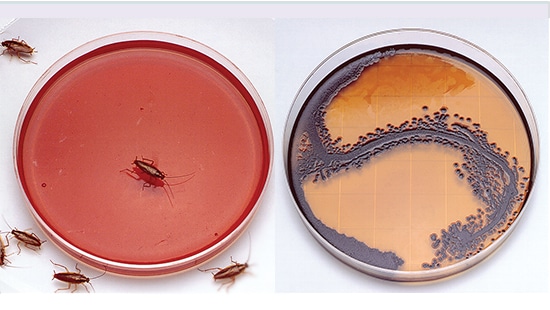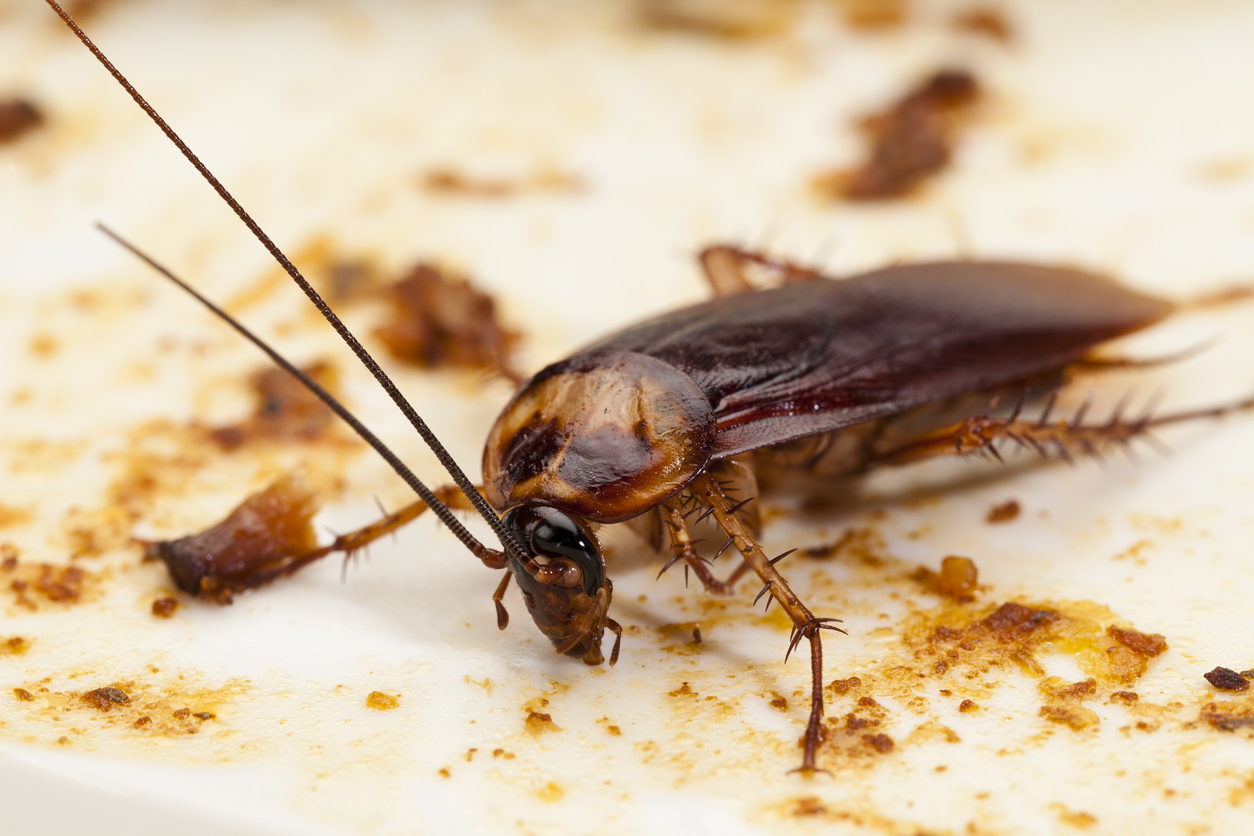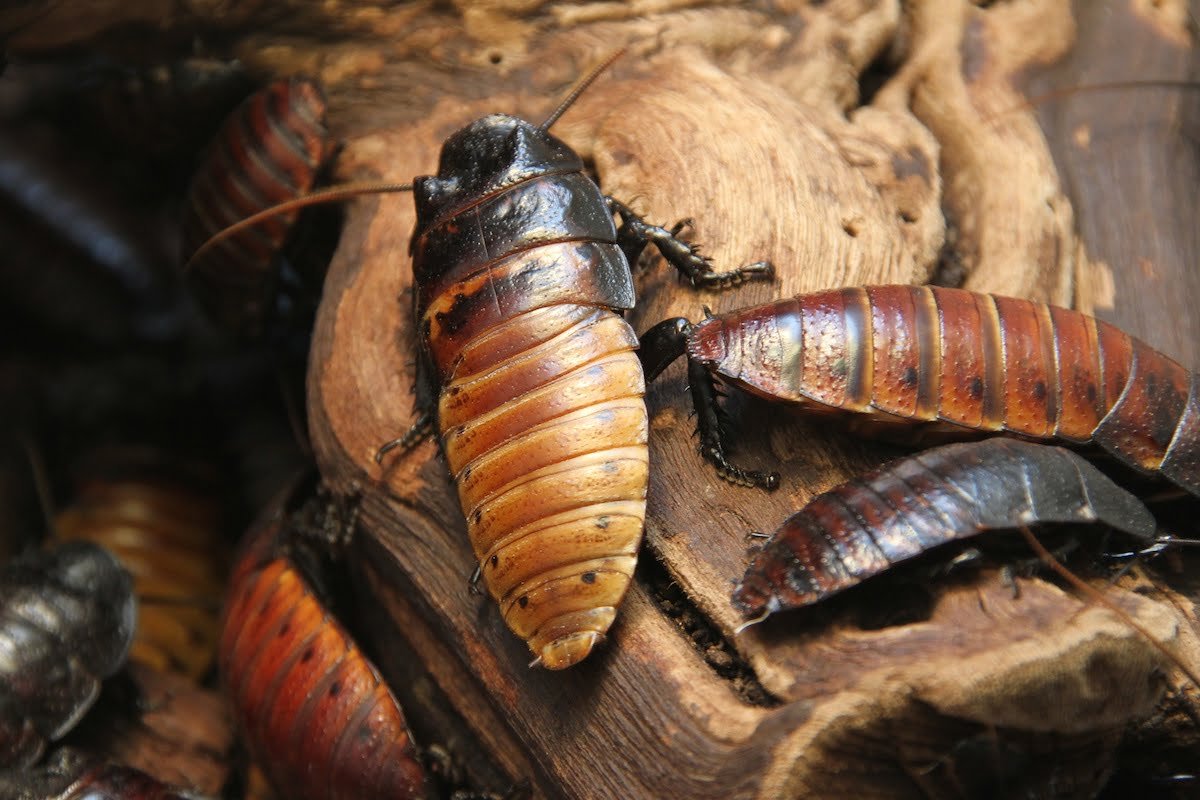Cockroaches harbor a significant number of bacteria, including harmful types such as E. Coli and Salmonella. These pests can spread various pathogens through contamination of surfaces and food.
Cockroaches, infamous for their resilience, are also notorious carriers of numerous bacteria and pathogens. They creep into homes and food establishments, posing health risks due to the bacteria they can spread. These creatures scuttle through sewers and garbage, picking up germs along the way, which can then be transferred to humans through direct contact or contamination.
Understanding the connection between cockroaches and bacteria is crucial for maintaining a healthy living environment, especially in areas where these pests are common. Regular pest control measures and maintaining cleanliness can significantly reduce the risk of bacterial spread by cockroaches, ensuring homes and food preparation areas remain safe and hygienic.
Cockroach Biology: A Vessel For Bacteria
It’s not just their scurrying nature that makes cockroaches unwelcome guests. They harbor a complex world of bacteria.
The Anatomy Of A Cockroach
Crack open the hard exoskeleton of a cockroach and you’ll find a thriving ecosystem. Microorganisms call this place home.
- The digestive system breaks down a wide range of organic matter.
- Spiracles, tiny holes in the body, let in air and all that floats in it.
- Their bristles capture particles, including bacteria, as they move.
Habitat Preferences And Bacterial Exposure
Dark corners and damp spaces are the playgrounds of roaches. Here, they pick up even more bacteria.
- Rubbish bins and drains are bacteria havens.
- Cockroaches often crawl through unsanitary areas, gathering germs on their bodies.
A single cockroach can spread these germs across everything it touches. Your countertops and food supplies are not safe.
The Spectrum Of Bacteria In Cockroaches
Imagine a creature that can carry a multitude of bacteria, silently coexisting with these microorganisms. Cockroaches are such creatures, teeming with an array of bacteria that have captured the interest of scientists and health professionals alike.
Common Bacterial Strains Found
Within the world of these six-legged scavengers exists a diverse community of bacteria. Studies have identified several common bacterial strains in cockroaches:
- Salmonella – A bacteria causing food poisoning
- E. coli – Known to cause severe stomach ailments
- Enterococcus – Which can lead to urinary tract infections
- Staphylococcus – A group causing skin infections
- Streptococcus – The culprit behind strep throat
The Role Of Environment On Bacterial Load
The diversity and abundance of bacteria found on a cockroach greatly depend on their environment. Urban dwellings, with their close-packed living conditions, tend to increase the bacterial load on these pests. On the other hand, natural habitats might yield a different spectrum of bacteria. Let’s consider:
| Environment | Impact on Bacterial Load |
|---|---|
| Urban Areas | Higher exposure to waste increases bacteria variety |
| Rural Areas | Less contact with human waste, potentially fewer bacteria |
| Hospitals | Possible carriers of drug-resistant microbes due to medication usage |
Cockroaches Vs. Other Pests: Bacterial Comparisons
Ever wondered how cockroaches stack up against other pests in terms of bacteria? This section dives into the bacterial comparisons between these unwelcome guests.
Comparison with Flies
Comparison With Flies
Flies are notorious for carrying bacteria. After all, they visit trash cans and animal waste. But what about cockroaches? Here’s the scoop. Surprising to many, flies are twice as filthy as cockroaches. Studies show flies carry more types of bacteria. These insects can spread them quickly due to their constant movement from filth to food.
| Pest | Bacteria Types | Common Diseases Spread |
|---|---|---|
| Cockroaches | Salmonella, Staphylococcus, Streptococcus | E. coli, Typhoid, Urinary Tract Infections |
| Flies | More varied than cockroaches | Dysentery, Food Poisoning |
Assessing the Relative Filth
Assessing The Relative Filth
Let’s assess how dirty these pests really are. Cockroaches wander through sewers and drains, picking up germs on their bodies. Flies, though, land on decay and feces, picking up pathogens that they transfer onto food. Assessing filth isn’t just about what bacteria they carry, but how they spread diseases. This makes flies potentially more hazardous in terms of spreading illness.
- Cockroaches: Often considered filthier due to their habitat.
- Flies: Scientifically proven to carry and spread more diseases.

Credit: www.ecolab.com
Health Risks Associated With Cockroaches
Health Risks Associated with Cockroaches inspire concern in many people. They should. These frequent uninvited guests carry a veritable cornucopia of harmful microorganisms. Understanding the health implications of a cockroach infestation is crucial.
Pathogens And Human Diseases
Cockroaches are vectors for disease. They move quickly across different surfaces. While doing so, they pick up various pathogens. Let’s look at the diseases they bring into homes:
- Salmonellosis
- Cholera
- Dysentery
- Typhoid Fever
- Leptospirosis
Each disease presents significant health threats. Families can fall ill when exposed to these bugs. Prevention and control are necessary to keep homes safe.
Allergens And Bacteria-related Ailments
Cockroaches trigger allergies. Their shed skin and droppings are problematic. This material becomes airborne. It affects indoor air quality. People with asthma suffer the most.
Bacteria-related ailments from cockroaches include:
| Ailment | Common Bacteria |
|---|---|
| Food Poisoning | Salmonella, E. coli |
| Wound Infections | Staphylococcus, Streptococcus |
| Diarrheal Diseases | Shigella |
Kitchens and dining areas must be kept clean. This is to avoid attracting cockroaches. Regular pest control helps reduce these health risks significantly.
Scientific Understanding Of Cockroach-associated Bacteria
Many might squirm at the mere thought, but delving into the bacteria that thrive within a cockroach is a journey overflowing with scientific fascination. Cockroaches, often labeled as pests, harbor a world of microorganisms. These critters are not just residents of our homes but also hosts to numerous bacteria, some potentially harmful to humans.
Recent Research Findings
Science has made leaps in comprehending the bacteria carried by cockroaches. Studies reveal a vast array of microbes living on and within these insects. The specifics vary widely, with some bacteria being innocuous while others pose significant health risks.
- Pathogens: Research identifies harmful bacteria like Salmonella, E. coli, and Enterococcus in cockroaches.
- Antibiotic Resistance: Cockroaches can carry bacteria that withstand common antibiotics, complicating treatment options.
- Diversity: The exact bacterial profile can differ based on the cockroach’s diet, environment, and species.
Laboratory Studies Vs. Real-world Scenarios
Laboratory tests offer controlled conditions that might not reflect a cockroach’s real-world habitat. Lab studies are essential for isolating and understanding bacteria types. However, the complexity of real-world scenarios impacts bacterial variety and behavior.
| Aspect | Laboratory Studies | Real-World Scenarios |
|---|---|---|
| Environment | Controlled | Variable and complex |
| Bacterial Growth | Monitored | Influenced by multiple factors |
| Bacteria Types | Limited selection | Diverse microorganisms |
Consequently, real encounters might present different bacterial profiles than what lab cultures suggest. Underlying factors such as hygiene, temperature, and food availability directly affect the cockroach’s bacterial load in the wild.
Disease Transmission: Myth Vs. Reality
Cockroaches are often associated with dirt and disease. Many believe these pests carry harmful bacteria that can spread to humans. But what is the truth about their role in disease transmission? Let’s separate myth from reality and explore how cockroaches may contribute to health issues.
Mechanical vs. Direct Transmission
Mechanical Vs. Direct Transmission
Understanding how diseases spread is crucial. There are two main ways: mechanical and direct transmission. Cockroaches often act as mechanical vectors. This means they don’t cause diseases directly. Instead, they carry pathogens on their bodies from one place to another.
- Mechanical Transmission: Movement of contaminants by cockroaches without infection.
- Direct Transmission: Spread of disease through direct contact or bites, which cockroaches don’t do.
Documented Cases Of Illness
While cockroaches are suspected to carry bacteria, it’s important to examine documented cases of illness. Studies have shown the presence of E. coli, salmonella, and other pathogens in and on cockroaches. These findings underline the potential for disease spread, especially through contaminated food or surfaces.
| Bacteria | Possible Illness |
|---|---|
| Salmonella | Food poisoning |
| E. coli | Diarrhea, UTIs |
| Enterococcus | Skin infections |
Impact Of Cockroach Infestations On Public Health
Cockroaches are not just a nuisance but a significant threat to public health. Their presence in homes and food establishments is a serious concern. These insects carry multitudes of bacteria and have the potential to spread various diseases.
Epidemiological Concerns
The risk to public health from cockroach infestations cannot be understated. Studies reveal that cockroaches can carry pathogenic microorganisms on their bodies. The pests often crawl through dirty areas and then onto food and surfaces, spreading the following:
- Salmonella
- E. coli
- Staphylococcus
- Streptococcus
These bacteria can lead to health problems including food poisoning, diarrhea, and skin infections. The infestations can also aggravate conditions like asthma, especially in children.
Measures For Disease Prevention
It’s critical to take steps to prevent disease spread by cockroaches. Here are essential measures:
- Regularly clean your home, focusing on kitchens and bathrooms.
- Seal all food containers.
- Block cracks and crevices to prevent entry.
Additionally, professional pest control services may be necessary to tackle severe infestations. Always maintain proper hygiene and disinfect surfaces.

Credit: knockoutpest.com
Strategies For Controlling Cockroach-related Bacteria
Unwelcome guests like cockroaches not only cause distress but can carry harmful bacteria. Strategies for controlling cockroach-related bacteria are vital to ensure a clean and healthy environment. This post will dive into the best tactics to manage pests and eliminate bacterial hotspots.
Best Practices In Pest Management
Effective pest management begins with understanding cockroach behavior. Cockroaches thrive in damp, warm areas with easy access to food. To combat these pests:
- Seal cracks and entries to prevent cockroach entry.
- Regularly clean your home to remove food particles.
- Use baits and traps strategically placed in high-activity zones.
- Seek professional pest control for severe infestations.
Eliminating Bacterial Reservoirs
Bacteria can linger on surfaces where cockroaches frequent. To eliminate these reservoirs:
- Disinfect surfaces regularly, especially in the kitchen and bathroom.
- Dispose of garbage properly and use bins with tight-fitting lids.
- Fix leaks to remove moisture that attracts cockroaches.
- Store food in airtight containers.
Regular cleaning and sanitation are your best defenses against bacteria proliferation.
Advancements In Bacterial Control In Cockroaches
Cockroaches are notorious for their ability to spread bacteria. These pests often carry harmful microbes on their bodies. Scientific research has provided innovative ways to tackle this issue. New methods in bacterial control for these persistent insects show promising results.
Innovative Solutions And Research
Experts are developing cutting-edge solutions to reduce the bacterial threat from cockroaches. One such innovation uses bioactive compounds that target the bacteria within the cockroach’s gut.
Another promising area of research involves the use of microbiome manipulation. Scientists work to alter the microbial community within cockroaches to reduce the spread of bacteria.
Out of these studies, new products are emerging. These include improved insecticides and baits that go beyond killing the pests. They actually lower the likelihood of bacteria spreading upon contact.
Future Prospects In Pest Control
The horizon looks promising for pest control. Research continues to find ways to reduce the bacteria cockroaches carry.
- Genetic engineering holds the potential to create cockroaches that cannot host harmful bacteria.
- Exploration of natural predators can offer biological control options.
- Advancements in non-toxic materials are providing safer, effective pest control measures.
These strides in control techniques could revolutionize how we keep our environments clean and safe from the bacterial threat of cockroaches.

Credit: drivebyeexterminators.com
Frequently Asked Questions
Do Cockroaches Have A Lot Of Bacteria?
Yes, cockroaches carry a variety of bacteria, including harmful pathogens like E. coli and salmonella.
Is A Cockroach Dirtier Than A Fly?
Flies carry more bacteria than cockroaches, posing higher contamination risks.
How Many Diseases Do Roaches Carry?
Cockroaches can carry multiple diseases, approximately 33 different kinds.
Conclusion
Understanding the level of bacteria cockroaches carry is vital for our health and hygiene. These pests are not just uninvited house guests; they are carriers of numerous bacteria, posing a risk for diseases. To safeguard our environments, it’s essential to maintain cleanliness and manage pest infestations promptly.
This way, we minimize bacterial threats posed by cockroaches, ensuring our homes remain safe and healthy for all occupants. Remember, prevention is always better than cure when dealing with these resilient creatures and their bacterial loads.
Related posts:

I’m MD Tanvir, and I bring years of expertise gained from working closely with pest control companies to the forefront. My journey in the industry has inspired me to launch Bug Battler, a platform aimed at equipping people with the know-how to combat pests autonomously. Through Bug Battler, I aim to empower individuals with practical insights to tackle pest infestations effectively.

